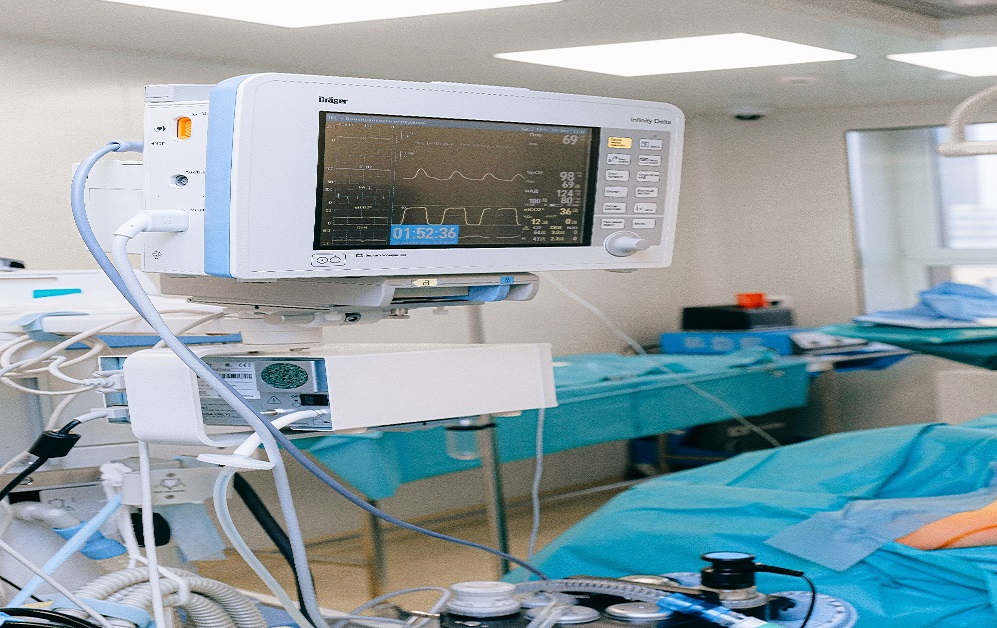(Critical care medicine) Comprehensive care of critically ill patient who is deemed recoverable is also carried out by skilled personal with life threatening or potential life threatening problems.
History of Critical Care Medicine:
- Critical care medicine is subsequently considered as the most vital part of healthcare system.
- Furthermore it changed the way we thought about saving patients after the war.
- It was taken into consideration more commonly during the world war.
- For instance, during the world war, recovery rooms were used to additionally help the critically ill patients and heal them.
- Furthermore, the development of mechanical ventilation is another game-changer that saved countless lives.
- Overall the concept of starting critical care for proper resuscitation of patients proved to be a success.
- Additionally, Certifications were approved in different fields after masters like anesthesiology, internal medicine and surgery also.
- Hence, with this in mind, overall training of doctors was vital in this regard.
- In addition, The development of new and complicated procedures like transplantations created an important role for critical care medicine.
- Widespread use, to demonstrate use of non-invasive monitoring of patients reduced complications and cost associated with critical care.
Current status of Critical Care Medicine:
- Additionally, the cost of critical care has risen exponentially with increased care.
- Subsequently, Manpower has become a major concern among healthcare system to provide adequate care to patients.
- Moreover, critical care has to go through a lot of advancements in the future for better results and faster management.
- Fellowships in critical care are being recommended by a lot of doctors for further studies and journals on new experiences.
1. How do you additionally approach a patient with critical illness?
With this is mind, the care of critically ill patients also requires a thorough understanding of the pathophysiology and centers initially on the resuscitation of patients during extreme deterioration.
Additionally, the use of invasive interventions like mechanical ventilation and renal replacement therapy are common methods being employed at intensive care units or ICU.
In addition, Critical care physicians must redirect the goals of care from resuscitation
And cure to comfort when the resolution of an underlying illness is not possible
2) Additionally, what are the complications, hence faced in the ICU?
- Delirium- It is a condition that lads to decreased mental status or functioning of the brain which develops furthermore from weeks to years also.
- Ventilation associated with pneumonia- Additionally, seen in lung related disorders that require oxygenation frequently via mechanical breathing machines that help to maintain basal oxygen levels.
- Renal failure- For instance,it is a condition that occurs when the functioning of kidneys gets affected within a week.
- Gastrointestinal bleeding- Furthermore, there is increased bleeding that occurs in gastrointestinal tract that affects the stomach and hence to the rectum.
- Bed sores- It is the pressure that occurs on the skin due to periodic sitting or friction in the same position that leads damage over the skin on a bony prominence.
- Death
Training for Critical Care Medicine:
- Subsequently, training of doctors in critical care is considered vital in improving the healthcare system.
- Additionally, these group of doctors are called intensivists.
- For instance, they are trained adequately in providing emergency care to all high risk patients.
- In addition, certifications are present across the world for nurses, pharmacists and paramedical staff to deal subsequently with patients all in all.
A) Assessment in critical care medicine:
Illness can be categorized additionally to a scoring system, hence being employed.
Subsequently,the severity of illness scoring systems have been developed ( SOI ).
Moreover, these scoring systems are important for defining populations of critically ill patients.
Furthermore,the systems cannot be used as a method of survival in individual patients.
The most commonly used scoring systems are as illustrated by the following:
For example:
1)SOFA (Sequential Organ Failure Assessment):
2)APACHE (Acute Physiology And Chronic Health Evaluation)
3)SAPS (Simplified Acute Physiology Score)
1) SOFA (Sequential Organ Failure Assessment):
This type of scoring system also involves six organ systems that grades from 0 to 4 according to the degree of dysfunction.
Patients with suspected infection can have poor outcomes similar to sepsis with at least few criteria such as
a) Subsequently ,Respiratory rate > 22
b) In addition, Altered mental status
c) For instance, to check if systolic blood pressure <100mg
For example:
| System | 0 | 1 | 2 | 3 | 4 |
| 1)Respiration (Pao2 in mmhg ) | >400 | <400 | <300 | <200 | <100 |
| 2)Coagulation (Platelets) | >150 | <150 | <100 | <50 | <20 |
| 3)Liver (Bilirubin in mg/dl) | <1.2 | 1.2-1.9 | 2-5.9 | 6-11.9 | >12 |
| 4)Cardiovascular(mmhg) | MAP >70 | MAP <70 | DOPAMINE <5 | Dp 5.1-1.5 | Dp >15 |
| 5)Central nervous system-GCS | 15 | 13-14 | 10-12 | 6-9 | <6 |
| 6)Renal (Creatinine in mg/dl) | <1.2 | 1.2-1.9 | 2-3.4 | 3.5-4.9 | >5 |
2) APACHE ( Acute Physiology And Chronic Health Evaluation):
It is the commonly used scoring system to assess the age, in addition to type of ICU admissions, chronic health problems and 12 physiological variables are used to derive a score.
A) Acute physiological scoring in critical care medicine:
| a) Rectal temperature- A thermometer inserted inside the rectum to check additionally, for internal temperature |
| b) Mean blood pressure- To check additionally for patients average pressure of blood in arteries |
| c) Heart rate- The average speed at which the heart beats in a life cycle. Furthermore, normal being in the range of 60-100 beats/min |
| d) Respiratory rate- It is the amount of breaths a patient takes in a minute. Furthermore, normal range-12 to 16 |
| e) Arterial PH |
| f) Oxygenation-To furthermore check for overall oxygen levels or saturation levels |
| g) Serum sodium- additionally to check for increased or decreased sodium levels |
| h) Furthermore ,Serum potassium- To additionally check for electrolyte changes that leads to hypo or hyperkalemia |
| i) Additionally, Serum creatinine |
| j) Hematocrit |
| k) Additionally, WBC count |
B) Glascow coma scale:
For example:
| EYE OPENING | VERBAL ( NONINTUBATED ) | VERBAL (INTUBATED) | MOTOR ACTIVITY | |
| 4-Spontaneous | 5-Oriented and talks | 5-Seems able to talk | 6-Verbal command | |
| 3-Verbal stimuli | 4-Disoriented and talks | 3-Questionable ability to talk | 5-Localizes to pain | |
| 2-Painful stimuli | 3-Inappropriate words | 1-No response | 4-Withdraws from pain | |
| 1-No response | 2-Incomprehensible sounds 1-No response | 3-Decorticate 2-Decerebrate 1-No response |
C) Points assigned to Age :
For example:
| AGE,YEARS | SCORE |
| <45 (subsequently) | 0 (subsequently) |
| 45-54 (subsequently) | 2 (subsequently) |
| 55-64 (subsequently) | 3 (subsequently) |
| 65-74 (subsequently) | 5 (subsequently) |
| >75 (subsequently) | 6 (subsequently) |
Chronic health :
| None | 0 |
| For instance, if patient is admitted, hence after elective surgery | 2 |
| Additionally, if patient is admitted after emergency surgery or for reason other than after elective surgery | 5 |
3) SAPS scoring system :
The SAPS 2 scoring system is most frequently used in European nations also.
Additionally, this is a mortality severity score tool to detect injuries related issues ad grade them subsequently.
Furthermore, It deals with 3 basic disease variables and is not disease specific.
a) AIDS
b) Moreover, Metastatic cancer
c) Additionally, Hematologic malignant disorders.
Additionally, these are the basic parameters that are being followed when a patient requires critical care
Also there is utility in predicting individual patient outcomes.
Advantages and disadvantages :
- Subsequently providing advances and organized care for patients.
- Moreover presence of hostile environment related to infections, anxiety, fear and loneliness.
Important journals on critical care:
For instance, American journal of respiratory and critical care medicines.
Intensive care medicine
Subsequently, Clinical journal of American society of Nephrology
Furthermore, for more such content do visit here
In conclusion, please refer this book for a detailed description of diseases : Harrisons book of internal medicine

